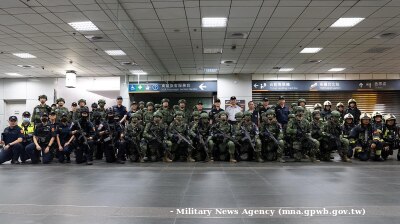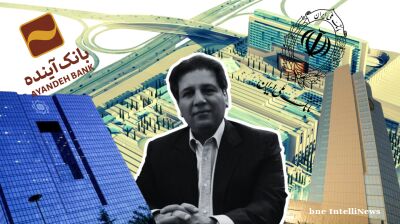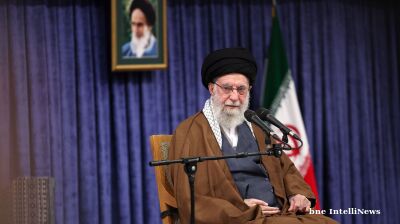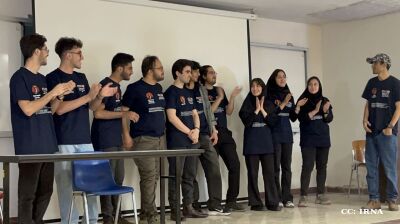The war in Ukraine has led to unprecedented levels of Russian-Iranian co-operation in the military, economic and political spheres. The rise of anti-Western hardliners in both Moscow and Tehran means that this co-operation is likely to continue and intensify, despite the differences between them. Their relations are not so much a marriage of convenience, as a “club of pariahs.”
“The new relationship between Russia and Iran is a direct threat to the EU and European countries. Russian-Iranian co-operation could prolong the war in Ukraine, increase Iranian capacity to advance its nuclear programme, destabilise the Middle East and undermine Western influence in institutions of global governance,” wrote Ellie Geranmayeh, the Deputy Director for the Middle East and North Africa programme at European Council on Foreign Relations (ECFR) with Nicole Grajewski, a visiting fellow, in a recent paper that studied how the war in Ukraine is shaping Russo-Iranian relations.
“European governments should seek to mitigate this damage through calibrated pressure and diplomacy. An important opening has now emerged for the West to de-escalate tensions with Iran and use its economic leverage to halt the advance of Russian-Iranian co-operation and isolate Russia,” the authors went on.
The Ukraine war and Russia’s pariah status has fundamentally changed much of the geopolitics in the emerging world. Under sanctions for decades, Iran has suddenly become a natural partner for Russia. This alliance has only been bolstered by the emergence of a BRICS bloc that the East-West clash has catalysed, and indeed Iran was added to the BRICS+ at the summit in August. Tehran has welcomed the allies and the additional clout that comes with joining a club that includes several of the biggest and most powerful emerging markets in the world, led by China.
Where the West had hoped to cut Russia out from the herd and weaken its economy by imposing crushing sanctions, neither of those goals have been achieved. Potentially a united BRICS bloc could challenge the Western hegemony, which Beijing would like to see, but even a loose confederation more focused on trade has improved the position of both Iran and Russia, providing them with ready-made allies. They are pariahs no more, as countries are forced to choose sides in the showdown.
“These realities present new, direct security threats to European governments. First, the strengthened partnership may enable Russia to prolong the war and increase the destruction in Ukraine. Secondly, together they can alter the balance of power in the Middle East through Russian support of Iran’s nuclear ambitions, arms transfers to Iran, and threats of military escalation in Syria. Thirdly, they might undermine Western influence in institutions of global governance,” the ECFR authors said.
The Ukraine conflict only accelerated what were already steadily deepening ties between Iran and Russia, but Moscow restrained itself in order to avoid antagonising the West and Israel by getting too close to Tehran. Now Moscow is in open conflict with the West. Those restraints have fallen away, and indeed, the motivation is now to deepen their mutual relations as fast as possible. Iran has emerged as one of Moscow’s most steadfast allies.
Russia now finds itself reliant on Iran in ways that were unimaginable prior to February 2022, says ECFR. Tehran’s provision of drones and rockets have greatly increased the Russian army’s destructive capabilities, making Iran Russia’s most significant military collaborator in the war.
The rupturing of normal cautious diplomacy that has been exaggerated by the war, but was already present in the trade wars begun by former US President Donald Trump and China, is also manifest in Iran. After Trump reimposed sanctions on Iran in 2018 and the collapse of the Joint Comprehensive Plan of Action (JCPOA) talks, President Ebrahim Raisi abandoned efforts at normalising relations with the West and, like China and Russia, started to prepare itself with open conflict instead.
The increasingly hostile nature of the US towards Iran has created fertile ground for the rise of harder line fractions amongst the Iranian elite.
“A significant factor pushing Iran to support Russia’s war in Ukraine is the rise of hardliners and the deep state in monopolising decision-making. This power balance dynamic directly influenced Iran’s decision to support Russia in the conflict,” the ECFR authors say
The authors quote an Iranian expert who described the relations in a secret briefing in Brussels as: “the West repeatedly disappointed [the more moderate] faction by betraying their deals and giving them nothing. Meanwhile, Russia has nurtured and strengthened the hand of the hardliners now in power. It has offered and delivered economic gains, military upgrades, and security assistance to maintain their position.”
New relations
The new close relations between Russia and Iran are not based on shared goals and ideology. Indeed, ideologically Iran and Russia are poles apart. One is a Middle Eastern Islamic theocracy while the other is a European autocracy based on Orthodox Christian conservative values.
It is also said that the lack of common ground will also stymie the development of the BRICS bloc, as the members have little in common. However, the glue that is holding the BRICS together in general, and Russia and Iran together in particular, is a shared fear and resentment of the G7+ control of the international geopolitical stage and the implicit threat that the sanctions tools that have been used on Russia and Iran can be used on any member of the emerging markets, should they cross the West. Russian President Vladimir Putin and Iran’s supreme leader, Ali Khamenei, have for some time been drawn together by a shared vision for a multipolar world order that diffuses power away from the West, but that is the extent of the overlap in their common worldviews.
As a result, the relationship between Russia and Iran, and the other members of the BRICS+, is built on pragmatic co-operation to facilitate each country’s national interest goals.
Security co-operation: Prior to Russia's invasion of Ukraine, Moscow and Tehran had a patron-client military relationship, with Russia supplying Iran with military equipment. However, Iran's contribution of drone technology to Russia, notably used in Ukraine, has transformed this dynamic. US officials are now concerned that Moscow and Tehran are evolving into a "full-fledged defence partnership." This co-operation includes the potential transfer of Russian Sukhoi Su-35 fighter jets that could significantly advance the performance of Iran’s military arsenal. Another area closely watched in Western and Middle Eastern capitals is whether Russia provides Iran with its S-400 air defence system and supports Iran’s missile production. Russian cyber technology is also a capacity that Iran wants to acquire.
“These developments are not only advancing Russia’s capabilities in Ukraine, but they also have the potential to provide Iran with a stronger military hand in the Middle East,” ECFR said.
Economic co-operation: Russia is now virtually on a par with Iran as one of the most heavily sanctioned countries in the world and the bulk of their relations going forward will be built on economic tie-ups. Iran has navigated sanctions for over four decades and has developed almost a blueprint for Russian officials on how to evade them. In the aftermath of Ukraine-related sanctions, according to one Russian economic expert, there has been “a lot of serious work” to improve economic ties between Russia and Iran, which had always been “a weak point” in the relationship.
Russian-Iranian bilateral trade has seen a notable increase since February 2022, with Moscow focusing on strengthening trade ties with Tehran. Official reports claim a 20% boost in bilateral trade in 2022, reaching $5bn, although IMF data suggests a total of $2.4bn. This trade includes undisclosed oil swap deals and military trade. Moscow has become the largest foreign investor in Iran, investing $2.76bn in the latest fiscal year. The trade mainly consists of foodstuffs exempt from US sanctions, but with new Western sanctions on Russia, the trade landscape may change.
Both nations aspire to expand annual bilateral trade to $40bn, a lofty goal considering their current trade volume lags far behind Russia's trade with other major partners like China, Turkey, and the EU.
Sanctions have severely limited their access to global financial and banking platforms, hindering trade and investment efforts. To address this, Russia and Iran have been cooperating on strengthening alternative banking avenues. The two countries are also united by their desire to dump the dollar in international trade. Russia initiated de-dollarisation efforts following Western sanctions after the Crimea annexation in 2014, creating its own financial messaging system known as the SPFS. Progress has been made in bypassing the dollar in transactions with China, Venezuela and Iran. Iran, too, actively pursues de-dollarisation as a response to what it views as the weaponisation of the dollar. The countries have connected their banks directly and introduced a rial-ruble exchange to de-dollarize trade. Russian banks are also issuing rial-denominated payments to Iranian banks, and credit card services are set to operate within Iran.
Iran's strategic geographic location has made it an attractive destination for investment in transit routes connecting Russia to Asia. These routes, including the Caspian Sea and the International North-South Transport Corridor (INSTC), offer road, rail and sea connections from northern Russia to India. However, the INSTC has faced challenges due to insufficient investment and sanctions against Iran. The Eurasian Development Bank (EDB) estimates over $26bn is needed to complete the INSTC, raising questions about which countries are willing and able to finance it.
Russia and Iran, both oil producers, are traditionally competing energy exporters. Now they are showing a willingness to co-operate. Energy swap deals are underway, and Russia plans to utilise Iran as a storage hub to reduce oil delivery costs to Asian markets. Gazprom has also pledged a $40bn investment in Iran's energy sector, including the development of Iranian oil and gas fields and gas pipelines. Iran's energy infrastructure, constrained by Western sanctions, can benefit from Russia's expertise in secondary gas production technology. However, Moscow cannot provide the funds Iran needs to modernise its energy system. Iran’s strategic petroleum sector alone is estimated to require $250bn in investment, an amount that is unlikely to come from Russia.
Features
KSE: Ukraine is facing a $53bn budget shortfall, but economy is stable for now
Ukraine is in urgent need of additional financing from partners as the continuation of the war drives up defence spending and reconstruction needs, jeopardizes budget financing, weighs on the balance of payments, and slows economic growth.
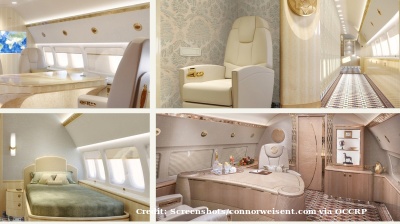
PANNIER: Ruling family’s ‘palace in the sky’ cruel sight for Turkmenistan’s poor souls down below
Photos posted of renovated Boeing by US makeover manager offer further insight into "ultra-luxurious" world enjoyed by Berdimuhamedovs.
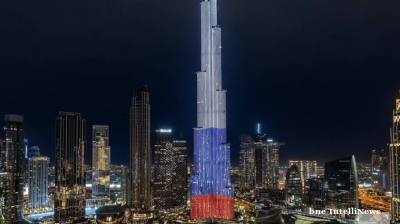
Russia tax service targets Russian accounts in UAE
The Russian Federal Tax Service (FTS) has ramped up its scrutiny of Russian nationals holding accounts in the United Arab Emirates, following the effective implementation of automatic tax information exchange between the two countries.

INTERVIEW: Can Albania’s tourism miracle last?
As social media brings in the crowds, the head of the Albanian Tour Operators Association tells bne IntelliNews Albania should turn away from mass-market tourism and focus on higher-value offerings.
